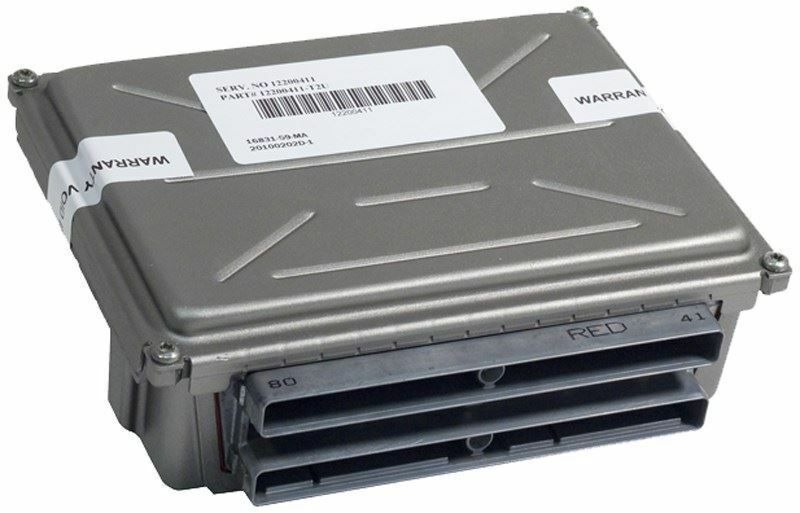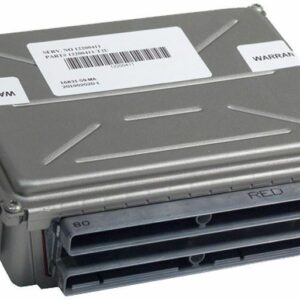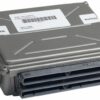Is Your 1998 Pontiac Trans Sport Acting Up?
If you’re dealing with a frustrating check engine light, erratic engine behavior, or a no-start condition in your minivan, the Powertrain Control Module (PCM) is often the culprit. As a technician with over two decades of experience under the hood, I’ve seen countless vehicles sidelined by a faulty engine computer. The PCM is the brain of your vehicle, controlling everything from fuel mixture and spark timing to transmission shift points. When it fails, the symptoms can be confusing and lead you down a rabbit hole of expensive, incorrect repairs.
This isn’t just a replacement part; it’s a complete solution. We provide a reliable PCM that is professionally programmed to your vehicle’s specific Vehicle Identification Number (VIN). This critical step ensures that the module communicates perfectly with your Trans Sport’s systems, incorporating all the latest software updates from GM. You get a part that’s ready for installation right out of the box, restoring the performance and reliability you depend on.
From the Diagnostic Bay: The Ghost in the Machine
I remember a 1998 Silhouette (which uses the same platform and electronics as your Trans Sport) that came into my shop. The owner had already replaced the fuel pump and a couple of sensors, chasing a random stalling issue. The van would run fine for days, then suddenly die at a stoplight. No codes were consistently stored. After checking fuel pressure and ignition signals, which were intermittently dropping out, my gut told me to look at the PCM. On these older GM vans, the PCM is often located in the engine compartment, where years of heat cycles and vibration can cause microscopic cracks in the circuit board. We installed a VIN-programmed 1998 Trans Sport PCM, and the problem vanished. The customer had spent hundreds on parts they didn’t need, when the real issue was the computer all along.
Signs Your PCM May Be Failing
A failing engine computer can manifest in numerous ways. If you’re experiencing any of the following, it’s a strong indicator that your PCM needs attention:
- ✔ Unexplained Check Engine Light (CEL) activation.
- ✔ Common diagnostic trouble codes (DTCs) like P0601, P0605, or other communication errors.
- ✔ The engine cranks but refuses to start.
- ✔ Rough or unpredictable idling.
- ✔ A sudden drop in fuel economy.
- ✔ Harsh or erratic automatic transmission shifting.
- ✔ Intermittent stalling for no apparent reason.
A Straightforward Guide to Installation
Replacing the PCM is a job most DIYers can handle in their own driveway. Our pre-programmed 1998 Trans Sport PCM makes it even simpler, eliminating the need for expensive dealer tools.
- Safety First: Always disconnect the negative terminal from your vehicle’s battery before starting any electrical work.
- Locate the PCM: On the 1998 Trans Sport, the PCM is typically found in the engine compartment, often mounted to the air filter housing or firewall for cooling.
- Disconnect the Connectors: Carefully unlatch and remove the electrical wiring harnesses from the old module. Inspect the connectors for any corrosion or damage.
- Remove the Old Module: Unbolt the old PCM from its mounting bracket. Keep the hardware as you will need it for the new unit.
- Install the New PCM: Mount your new, pre-programmed PCM onto the bracket and securely tighten the bolts.
- Reconnect Everything: Plug the wiring harnesses back into the new module until they click into place. Reconnect the negative battery terminal.
- Perform Security Relearn (If Necessary): In some cases, a simple security relearn procedure is required. This typically involves turning the key to the ‘ON’ position for 10-15 minutes. Consult your owner’s manual for specific instructions. Your vehicle is now ready to start.
Verified Vehicle Compatibility
This module is a direct-fit replacement for a wide range of GM vehicles. Please verify your vehicle and engine size below. This part is compatible with service numbers 09356741, 16236757, 9357034, 9357440, and 9366314.
Achieva (3.1L), Bonneville, Camaro (3.8L), Century (3.1L), Cutlass, Eighty Eight, Firebird (3.8L), Grand Am (3.1L), Grand Prix, Intrigue, LeSabre (3.8L), Lumina Car, Malibu (3.1L), Monte Carlo, Park Avenue (3.8L), Regal, Riviera (3.8L), Silhouette, Skylark (3.1L), Trans Sport, Venture (3.4L)
1999 Models (verify ID number):
Alero (3.4L), Cutlass, Grand Am (3.4L)
Frequently Asked Questions
Frequently Asked Questions
Do I need to do any programming myself?
No. We handle all the programming for you before shipment. Simply provide your vehicle’s 17-digit VIN during checkout, and we will flash the module with the latest GM software specific to your car. It arrives ready to install.
What is a VIN and where do I find it?
The VIN (Vehicle Identification Number) is a unique 17-digit code for your vehicle. You can typically find it on a plate on the driver’s side dashboard (visible through the windshield), on the driver’s side door jamb sticker, or on your vehicle’s registration and insurance documents.
Is this a difficult part to install?
For most DIYers, this is a straightforward installation that takes less than an hour. It involves disconnecting the battery, unplugging the old module, swapping it with the new one, and reconnecting the battery. No special tools are typically required.
Will this fix my check engine light?
If the check engine light is caused by an internal failure of the PCM (e.g., codes P0601-P0606), then replacing it with this programmed unit will solve the problem. However, if the light is on due to a faulty sensor or other component, that issue will still need to be addressed separately.
What makes your module better than one from a junkyard?
A junkyard module is a gamble. It will not be programmed for your specific VIN, which can cause compatibility issues, and you have no idea of its history or condition. Our modules are tested, professionally programmed with the latest software, and ready to provide reliable service, saving you time and potential headaches.



